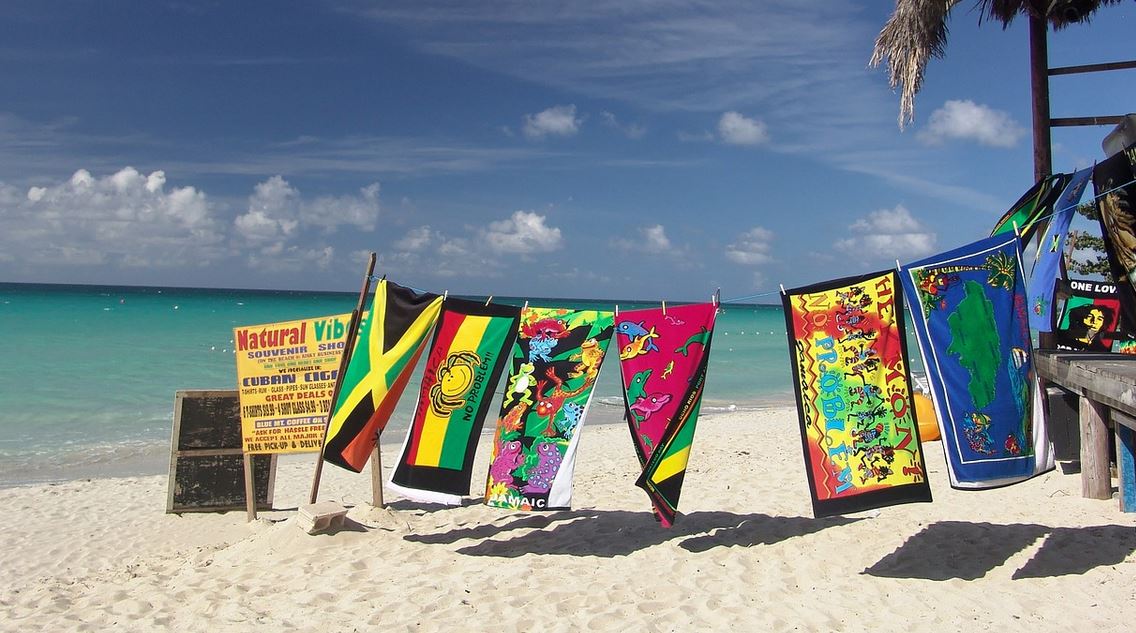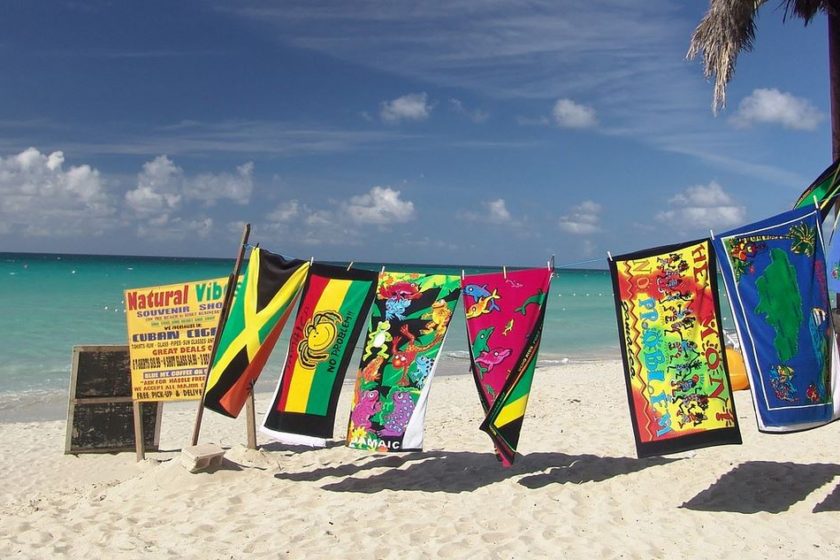Jamaica has an estimated population of about 2.9 million people and annual estimated population growth of 0.73%. It comprises of various ethnic groups such as the African, Chinese, and East Indian, the white and other mixed groups. Due to different ethnic groups there are various religious affiliations like Rastafarian, catholic, Muslim among many others. On the other hand, Jamaica has a constitutional parliamentary democracy which is partitioned into the legislative executive and the court or judicial. The main political parties that exist in Jamaica are Jamaica national party and people’s national party.

Jamaica’s Conceptual Perspectives on Globalization
Although the tourism industry has been a major contributor to the development of the economy in Jamaica, globalization, which is associated with tourism, has severely affected Jamaica. The large tourist amenities at Montego Bay offer the tourists with food, and entertainment. However, the tourists rarely experience the Jamaican life where it is inhabitants are confined in compounds, consuming food traded from overseas. Sewage from this tourist’s hotels drains into oceans destroying the original coral reefs.
Jamaica’s Democratization
In the 1962, Jamaica came up with a constitution based on the united kingdom model. However, the people’s national party, which came into power in december 2011 plans to to detach Jamaica from having a monarchy system of government to a republic type of one where the head of state will be an indigenous president. Contrariwise,the Jamaican judiciary is lso modeled from that of the united kingdom.
Jamaica has a stable political system. But, its economic flactuations have worsened the social associations hence leading to the political wrangles. High unemployment mostly in the kingston region has led to rampant violent crimes leading to political instability.
The winning of people’s national party 2002 became the first political party in the Jamaican history to win four continous general elections. On march 30, 2006, prime minister Patterson retired, and Portia Simpson took over as prime becoming the first female priminster in the history of jamaica (Blake, p. 163).
Portia Simpson left office after the peiple’s national party lost to the jamaica national party, led by buce golding. Bruce’s party served a single term becoming the first party in jamaica to serve a single term.
Jamaica’s Growth and Development
As a result of globalization in the 21st century, there has been an improvement in social development in Jamaica. The wide spread of technology from America to Jamaica has speeded its globalization, which has contributed a lot its development. Jamaica was estimated to have had an average annual rise in gross domestic product of 2.5% in the year 2004. Similarly, it has been experiencing a steady economic development after the current Hurricane Ivan Destruction.
Jamaica’s Globalization in the 21st Century
In 2006, Jamaica encountered inflation because of increase in food prices, extraordinary rise in oil prices and external public debt. In spite of these obstacles, Jamaica was able to generate a praiseworthy growth domestic product rise of 1.4 % (2006). However, its economy was saved from being in a troubled situation by high net international reserves from the agriculture and tourism sector.
One of the most significant factors that might have led to the collapse of the Jamaican economy in 2006 was its incapability to contain public debt. The public debt rose up to an alarming figure of 847 billion dollars in 2006, a rise of about 11.5% in 2005.
Jamaica’s Sovereignty
Jamaica’s essential sovereignty has been in sanctuary since 1976 to 1978. At this time, its government was forced to adhere to the IMF requirement to devalue its currency, get rid of price controls, cut public spending and restrict wages.
Jamaica’s Market Integration
Besides, Jamaica’s essential sovereignty reached its high point during Michael Manley’s reign in 1972-1976. At this time, Jamaica opened full political associations with Cuba, expelled Vincent de Roulete, the United States ambassador for his impertinence. They also levied heavy taxes to bauxite companies that were owned by the North American’s. They this did for the purpose of financing a ruthless social program that was intended to benefit the poor in Jamaica. On the other hand, they resisted the United States particularly Secretary Kissinger by assisting the Cuban act of supporting the forces of apartheid in Angola. Moreover, they campaigned for the implementation of a new worldwide economic order.
Jamaica’s Culture and People
New cultures have been emerging in Jamaica due to the mingling of its inhabitants in its shores. Although the mingling of these cultures encourages pride, it has led to Jamaica’s typically harsh society with a lot of mockery that an immigrant might seem unsuitable.
The official language in Jamaica is English. However, the Jamaicans have their own linguistic style of English which clearly depicts their culture. On the other hand, every village in Jamaica has its own type of linguistic style. Additionally, the Jamaican English is a mixture of Spanish, Irish, African and American idioms. For instance, Jamaicans refers to shoes as “zapatos” which is a Spanish word. Moreover, they use the word “nyam” when referring to direction, which is an African word meaning “eat”. Moreover, the Jamaican language is associated with the language used by the slave.
In addition, the Jamaican culture is well known because of its aromatic spices (cuisine). The sweet smelling flavor of the Caribbean food has made the island’s kitchenette to be well known for it is rare styles of flavors in the globe. One of the most common flavors found in their menus is jerk. Jerk can be added to all types of food but normally it is added to meat. Seafood is as well common on the island; however, the Jamaican dishes that threaten visitors are the goat’s head soup and cow foot stew.
As noted earlier they are different forms of religions in Jamaica, however, all reflect its local culture. Jamaica has the highest number of churches per square mile in the world as indicated in the Guinness book of world records. Rastafarian is the most common religion on the island. It emerged in 1930 as a grass root religion and became widespread after being promoted as a substitute to the white related religions. The Rastafarians adore the Ethiopian ruler Haile Selassie. On the other hand, they believe in rebirth and also they believe that it is a sin for a man to comb or cut his beard or hair.
The belief of the Rastafarians not cutting or combing their hair and beard is meant to nurture the inner spirit in each Rastafarian. This has affected their language up to the extension that they add “I” as a prefix to majority of the words that they speak. Contrariwise, they use marijuana in their rituals and as a medicinal aid.
As much as Rastafarian is a growing culture and religion in Jamaica not all Jamaicans believe in what they do. On the other hand, Rastafarian is not only used as a religion in Jamaica, but it has spread to a number of countries around Jamaica and the whole world.
Although Jamaica is surrounded by European and American countries, its people have not been influenced by the cultures of these countries. They have been able to master and retain their own culture. Besides, Jamaica has produced many international artists like Joseph Hill, Gregory Isaacs, Bob Marley, Vybz Kartel and Cecil. A number of their songs are grounded on the Rastafarian language.
On the other hand, hand the Jamaican culture is well known because of the dancing style of its people. Its dancers have a unique dancing style that fuses that of the Africans and the Europeans. Example of a well-known Jamaican local dancing style is “jonkonnu.” The dance originated from the Jamaican slaves who used to practice it during the Christmas times. Another type of dance is the “bruckins”. This dance was used by the slaves during the period of emancipation.
Although there are new dances, which crop up from Europe and Africa, these dancing styles have still been retained, and most of the dancing styles in the world originate from them. The national dance theater firm preserves and keeps alive the local dances of Jamaica.
The most popular Jamaican music is reggae. One of the most famous reggae musicians from Jamaica was Bob Marley. He shaped and revolutionized the art of music. The reggae music has given rise to other forms of modern music like Dancehall. Language, food, music, and painting present the lasting influence of Jamaica’s culture to the world.
Jamaica’s environment
Jamaica faces environmental problems of waste disposal and water quality. It has 9.4 cu kilometer of recyclable water resources with 77 percent of them for agriculture and 77 percent for industrial uses. It is estimated that only 85 percent of the inhabitants who reside in rural areas and 98 percent of those who reside in cities access pure drinking water.
Oil spills have polluted the coastal waters. Moreover, the excavation of bauxite has polluted the ground water by mixing it with red mud waste. Due to this some mammal, bird and reptile species have been endangered. Kingston is the most populated town in Jamaica. This is because it is densely populated therefore causing waste disposal problems.
However, Jamaica has luxuriant hills, and crystal-like rivers. On the other hand, one of Jamaica’s appealing natures is its calm tropical maritime environment. Its coastal temperatures are averagely 26°C to 30°C perennially. It has an average annual rainfall of 1980mm. but the rainfall may vary slightly according to different regions.
Jamaica’s Globalization in general
The economic and political instability in Jamaica has been brought about by globalization. Majority of the Jamaican businesses have been affected by globalization. For instance, the dairy business is steeply declining because of high import of cheap powdered milk. On the other hand, onion, beef, and poultry industries have also been severely affected by the importation of cheap products of the similar kind.
Additionally, globalization has led to environmental costs in Jamaica. Some of the globalization costs on the environment comprise of erosion of soil from steep slopes as a result of growing of coffee along this slopes. On the other hand, the chemical that is used in this coffee plantation is drained into rivers and lakes killing the marine life like fish. This makes the fishermen to lose their source of income. They then engage in violent crimes to earn a living. Furthermore, the rapid deforestation in Jamaica threatens the yellow-billed parrot and the amazon parrot species which serve as a source of tourist attraction.
In conclusion, occurrences in Jamaica exemplify some of the impacts of globalization to the economy. In Jamaica globalization has led rise in transnational flow of ideas, infections, technology, people and culture. On the other hand, Westernization, the burden of international companies and drug traffic has destabilized the Jamaican life. However, emigration has at least reduced these burdens in Jamaica. The Jamaicans who live outside the country send a remittance of $1.3 yearly to families. The poor economic projections indicated by low level investments have spurred formation of grassroots communal development organization.

Leave a Comment